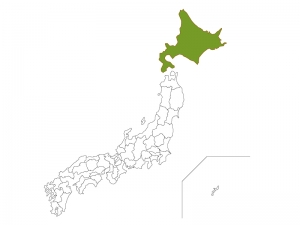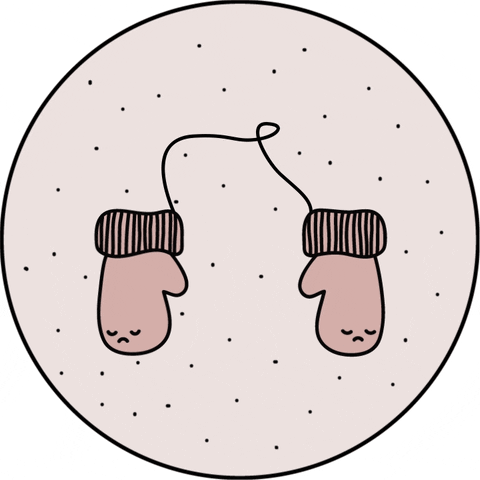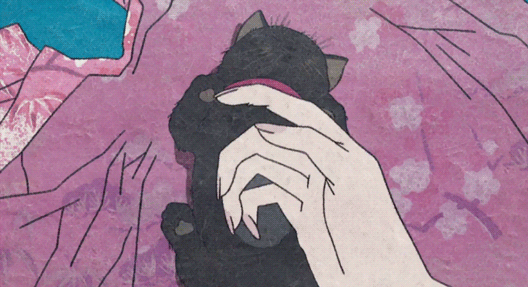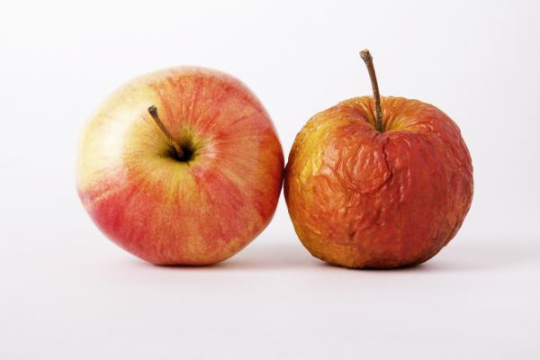linguistics and learning japanese!!
Last active 2 hours ago
Don't wanna be here? Send us removal request.
Photo

Hi everyone! I realised I had this awesome cheat sheet of over 100+ HSC Japanese grammar structures that I used to ace my HSC exams! This is useful for anyone currently studying Japanese.
This is a complete list of all the grammar structures you learn in senior HSC and that you need to use to score a Band 6 in all reading, writing, listening and speaking tasks! The more structures you use the better! Enjoy!!
Download as a single handy A4 page printable!
1. ~て
2. And て。。。
3. But が・けれども
4. About 。。。のこと・。。。について
5. Present form ~ている
6. Called という
7. I’ll go and… ~て来る
8. Comparing どちら・どれ・方
9. The most 一番。。。
10. Than 。。。より
11. Plain form
12. Because 。。。から
13. Probably 。。。でしょう・だろう
14. I think 。。。と思う
15. To become ~くなる・「に」なる
16. Verb plain forms
17. I’ve heard 。。。そう
18. It seems ~そう
19. Adverbs ~そうな・~そうに
20. Because (verbs) 。。。から
21. Because 。。。ので
22. After ~てから
23. From… To… 。。。から。。。まで
24. But (plain) が・けれども
25. Having, taking, bringing 持って~・つれて~
26. That much こんなに・そんなに・あんなに
27. I think (verbs) 。。。と思う
28. Giving あげる・くれる
29. Doing favours ~てあげる・~てくれる
30. Before/After 前「に」・後「で」
31. Probably (plain) 。。。でしょう・だろう
32. Beginning ~だす・~はじめる
33. Doing a variety of things ~たり~たりする
34. Purpose ~に
35. When 。。。時
36. I have to ~なければ ならない・いけない
37. Don’t/Without/Instead of ~ないで
38. Negative ~て
39. Because ~て。。。
40. I’m glad ~てよかった
41. Quoting 。。。と言う
42. Try ~てみる
43. Completely ~てしまう
44. Dropping particles
45. Relative clauses
46. If/When ~たら
47. I hope ~たらいい
48. Past experiences ~たことがある
49. Easy/Hard to do ~やすい・~にくい
50. If/When 。。。と
51. Audible/Visible 聞こえる・見える
52. Whether or not ~かどうか
53. While ~ながら
54. Decisions 。。。ことにする・ことになる
55. Volitional form ~ましょう
56. Volitional form (plain) ~「お」う
57. Intentions ~「お」うと思う
58. How to ~かた
59. Too much ~すぎる
60. Seems like ~よう
61. Intentions 。。。つもり
62. And 。。。し
63. Verbs into nouns の・こと
64. の・こと 。。。は。。。です
65. ~のです・~んです
66. Receiving ~てもらう
67. Nouns into descriptive nouns ~てき「な」
68. Potential form ~「え」る
69. Potential (sentences) 。。。が ~「え」る
70. While うち・間
71. If ~ば
72. Giving advice ~た方がいい・~ない方がいい
73. As many as 。。。も
74. Even if ~ても
75. Permission not to ~なくてもいい
76. Perhaps 。。。かもしれない
77. Something 何か
78. Nothing/Anything 何も。。。ない
79. Only 。。。しか。。。ない
80. Purpose/So that ように
81. I can 。。。ことができる
82. Seems みたい
83. よう・みたい
84. Even though 。。。のに
85. Ending ~おわる
86. Instructions ~なさい
87. Adjectives to nouns ~さ
88. Expectations はず
89. If なら
90. No matter what ~ても
91. Seems ~らしい
92. Not as… as… ほど
93. Quoting requests ~ように言う
94. Comparing actions
95. Embedded questions
96. Purpose ために
97. Transitive/Intransitive verbs
98. Some are… others are… ~たり~たりする
99. Relative clauses (nouns)
100. You must not ~てはいけない・だめ
101. Giving/receiving ~ていただく・~てくださる・~てやる
102. Anything/Everything 何でも
103. Purpose のに
@learnjp @nihongogogo @kanjikiwi @rendakud @thatlanguageguy @studying-conversation I hope you guys don’t mind me tagging! (^人^;) ゴメン I thought you and your followers may find it useful :)
Latest MasterPosts: New Years Resolutions Masterpost + Mind Map Tips + Awesome Things to Look Forward To At College/Uni + Bujo Ideas Masterpost
Follow optomstudies for daily original posts and study masterposts! Links: all originals + langblr posts + 15-part college 101 series + web directory!
4K notes
·
View notes
Photo

WordBrewery is great for improving your vocabulary. It gives you a random sentence at either beginner, intermediate, advanced or master level, and you can make lists of words or sentences that you’d like to learn. It includes the following languages:
Spanish
English
Chinese
Arabic
Portuguese
Russian
Japanese
German
French
Italian
Polish
Ukrainian
Korean
Serbian (Latin)
Serbian (Cryillic)
Hungarian
Greek
Swedish
Norwegian
19K notes
·
View notes
Text
Mutual Intelligibility 3 Links posts to date
Alongside the 6 Resource Guides, Mutual Intelligibility continues to publish weekly 3 Links posts, bringing you the best linguistics resources on the internet for your classes, or self-directed study.
Below is a list of 3 Links posts published to date. You can sign up to receive weekly emails whenever a new 3 Links post is published.
3 Links about Linguistics Teaching Resource Compilations - Introducing Mutual Intelligibility
3 Links for Second Year Syntax Video Lectures
3 Links for Second Year Phonology Video Lectures
3 Links for Natural Language Processing
3 Links for Semantics and Pragmatics
3 Links for Sociolinguistics
3 Links for Second Year Psycholinguistics
3 Links for Field Methods
3 Links for Articulatory Phonetics
3 Links for Writing Systems
3 Links for Gesture Studies
3 Links for linguistics communication (lingcomm)
3 links for Evidentiality
3 links for Linguistic Discrimination and African American English
3 Links for Linguistics Careers Outside Academia
3 Links for Schwa
3 Links for the Linguistics of Emoji
3 Links for Proto-Indo-European
Mutual Intelligibility is a project to connect linguistics instructors with online resources, especially as so much teaching is shifting quickly online due to current events. It’s produced by Lauren Gawne and Gretchen McCulloch, with the support of our patrons on Lingthusiasm.
Here’s where you can tell us which topics would be useful for you. The more requests we get for a specific topic, the more it helps us prioritize resources that will help the most people.
Here’s where you can send us links (of either things you’ve made or have found useful) for potential inclusion in future newsletters. You can send a single link, or a set of three which may become a 3 Links guest-post! (With credit to you.)
236 notes
·
View notes
Photo

Who would have believed that the perfect Wikipedia photo caption could have been improved on? (Alan Ferrier on twitter)
I love this as an example of Gricean humour. Grice’s Maxims say to only say things that are relevant (i.e. interpret everything someone says as if it adds relevant information to the conversation). In this case, the caption is “improved” by adding (right) after the name of the bagpiper. In many photo captions, (left) or (right) is used to tell us which of several similar-looking people the caption is about. If there were several bagpipers or even humans, (right) would be a neutral, informative information.
But here, the only entities in the photo are Piper Kerr and the indifferent penguin. It’s very easy to tell the difference between them. So adding (right) brings with it the absurd interpretation that (right) is relevant information, i.e. that the piper and the penguin are hard to tell apart.
144K notes
·
View notes
Link
An interesting article about an experiment in language evolution, by Cathleen O’Grady for Ars Technica. Excerpt:
The children had to play a game similar to charades. One of them had to convey a meaning, like “bicycle” to their partner, who then had to choose the correct picture from an array. The kids weren’t told to gesture—they were just told to communicate and placed in a situation where speech wasn’t an option.
The very youngest children, who were four years old, had to be prompted to use gestures. But six-year-old kids figured it out quickly on their own, and played the game with each other with high levels of success.
The same pictures came up repeatedly throughout the game. This gave the researchers the chance to see what happened when the kids had to refer to the same concept over and over again. They found that the children quickly developed conventions, with their gestures bearing less obvious resemblance to the ideas they were trying to communicate.
In one pair, Bohn says, the child had the tricky task of communicating a blank white space—the idea of “nothing.” After a few failed attempts, she noticed a white spot on her shirt and pulled her t-shirt to the side, pointing to the spot. Her trick worked, and her partner guessed correctly.
In the next round, when the blank image came up again, the other child pulled her shirt to the side and pointed to it—even though her shirt had no white spot. In a single round, the gesture had gone from being tangibly linked to the concept of “nothing” to being completely divorced from it. An outsider looking in wouldn’t be able to figure out what the gesture meant by looking at it—just like in real languages, where no-one can figure out what “elephant” means just from the shape of the word.
In a later experiment, six- and eight-year-old children also started to develop mini-grammars by establishing “words” that they could combine in different ways. For instance, instead of gesturing “a big duck” by using the “duck” gesture with bigger movements, they developed a sign for “big” that they could use with a range of different words. When they combined gestures, they didn’t stick to German word order, which suggests a limit to how much their native language was coming in to play.
Read the whole thing.
6K notes
·
View notes
Text
Moderately Interesting Japanese Ep. 8 Hokkaido Dialect

The typical winter scenery of Hokkaido.
One of my favorite aspects of language learning is studying dialects. I am fascinated by how language branches and adapts to new environments like some form of linguistic natural selection. Japanese is rife with interesting dialects, some of which are so different from the standard that they can sound like a totally different language to the untrained ear. I thought I’d make a series of posts highlighting different dialects in Japanese. Since this sort of post will take a bit more research on my end and I plan to find native speakers of the dialect to confirm with, they won’t be very regular, but I hope that you enjoy them!
What are some of the main Japanese dialects?
Firstly, let me tell you how to say “dialect” in Japanese, because I know I’m gonna use it and I don’t want to cause any confusion.
方言 (hougen) Dialect
___弁 (__-ben) __ Dialect, so “Osaka Dialect” is “Osaka-ben.”
I daresay that just about 100% of all Japanese learners are familiar with Tokyo-ben, because it is Standard Japanese. The next most popular dialect is Kansai-ben, which is spoken in the Kansai region (Osaka, Hiroshima, etc.). The Kansai Dialect can be broken down into several smaller, regional dialects. Next would probably be Okinawa-ben.
(Caution! Some people, particularly Okinawans, consider Okinawan Japanese to be a language independent from Japanese, and they can be offended if you refer to it as a dialect. Japan’s official stance is that Okinawan is a dialect, though, so I am calling it a dialect in my posts.)
Now without further ado, let’s actually start learning about one of these dialects!
Hokkaido-ben, namara ii!

Hokkaido is the island in green. It’s the biggest prefecture in Japan by far.
I am a foreigner and Japanese is not my native language, but I have been living on the island of Hokkaido for 5 years now and am very comfortable with the Hokkaido dialect, so I chose to introduce it to you first. Also, it’s not one that gets talked about a lot, so I figured maybe there weren’t many posts about it.
Hokkaido is the northernmost island of Japan, and it wasn’t settled and officially incorporated as part of Japan until the late 1800′s. There is a group of indigenous people here called the Ainu who speak a language completely different from Japanese, but their language has not bled into Hokkaido-ben. (Many place names in Hokkaido are from Ainu, though).
Because Hokkaido was settled so late in history compared to the other islands of Japan, their dialect doesn’t differ drastically from Tokyo-ben. There are some minor intonation differences that, frankly, I don’t feel confident explaining. I have internalized the intonations through exposure, but I’ve never been taught it and don’t really know what is correct. So I’m not going to talk about tonal differences, and instead focus on the different words and a wee bit of grammar.

投げる Nageru
Standard Japanese: 捨てる suteru
English: to dispose of (lit. “to throw/toss”)
To an English speaker, “throw away” feels just as natural as “dispose of.” But to people outside of Hokkaido, it sounds very unusual and the image it conjures is comedic, like someone is hurling trash into the garbage can like it’s the opening pitch at the World Series.
Example: そこの古い新聞を投げていいよ。 Romaji: Soko no furui shinbun wo nagete ii yo.
Standard: そこの古い新聞を捨てていいよ。 Romaji: Soko no furui shinbun wo sutete ii yo.
English: You can throw away those old newspapers there.
Learn a whole bunch more by clicking below!

おっかない Okkanai
Standard: 危ない abunai
English: dangerous, scary, a “close call”
My hostmom uses this with me, like, all the time. According to her, I’m always doing okkanai things, like walking alone at night or *gasp* going outside with wet hair. I love her so much haha.
Example: うちの子が熊のぬいぐるみだと思って遊んでいたのは本当の子グマだった。おっかなかったわ! Romaji: Uchi no ko ga kuma no nuigurumi da to omotte asonde ita noha hontou no koguma datta. Okkanakatta wa!
Standard: うちの子が熊のぬいぐるみだと思って遊んでいたのは本当の子グマだった。危なかったわ! Romaji: Uchi no ko ga kuma no nuigurumi da to omotte asonde ita noha hontou no koguma datta. Abunakatta wa!
English: Our kid thought he was playing with a teddy bear, but it was actually a live bear cub. What a close call!

(手袋を)履く (Tebukuro wo) haku
Standard:(手袋を)はめる (tebukuro wo) hameru
English: to put on (gloves)
Winter in Hokkaido is long and cold. Gloves are one of the most essential articles of clothing here, and I have heard/used “haku” so much that “hameru” sounds incorrect to me. The “haku” sounds funny to other Japanese people because it is used for putting on socks, underwear, and pants, and they will imagine you putting socks or panties on your hands instead of gloves.
Example: 外は寒いから、手袋を履きなさい。 Romaji: Soto ha samui kara, tebukuro wo hakinasai.
Standard: 外は寒いから、手袋をはめなさい。 Romaji: Soto ha samui kara, tebukuro wo hamenasai.
English: It’s cold out, so put on your gloves.

めんこい Menkoi
Standard Japanese: 可愛い kawaii
English: cute
I included this because it’s one of the famous aspects of Hokkaido-ben, but I actually don’t hear it used that much. I tend to see it on souvenir shirts for tourists more than in actual conversations.
Example: この子猫はめっちゃめんこい! Romaji: Kono koneko ha meccha menkoi!
Standard: この子猫はめっちゃかわいい! Romaji: Kono koneko ha meccha kawaii!
English: This kitten is super cute!
Note: Even though it is functioning as an adjective and ends with an “i,” it is not an “i” adjective. It is a “na” adjective.

あずましくない Azumashikunai
Standard: 居心地が悪い、嫌 igokochi ga warui, iya
English: uncomfortable (surroundings), unpleasant
This is a word that many Hokkaido people use but struggle to explain. Azumashikunai describes any place that you find unpleasant or uncomfortable, maybe due to it being too crowded, or too empty, or because it’s very cramped, for example.
Example: 日曜日の札幌駅が人混みであずましくない。 Romaji. Nichiyoubi no Sapporo-eki ga hitogomi de azumashikunai.
Standard: 日曜日の札幌駅が人混みで嫌だ。 Romaji: Nichiyoubi no Sapporo-eki ga hitogomi de iya da.
English: Sapporo Station is always crowded on Sundays and I don’t like it.

いずい Izui
Standard: none
English: different (in a bad way), off-kilter, something is “off”
Hokkaido people really struggle to explain izui because Standard Japanese doesn’t have an equivalent for it, but I think it can be likened to “off” in English. You got something in your eye but can’t find it and your eye feels funny? Your eye is izui. You have a hair in your shirt and can’t find it? That feels izui. Sometimes it can be a mysterious ache not painful enough to warrant a visit to the doctor, or sometimes it can just be a sense that something is “off.”
Example: 目にゴミが入って、いずい。 Romaji: Me ni gomi ga haitte, izui.
Standard:目にゴミが入って、痛い。 Romaji: Me ni gomi ga haitte, itai.
English: Something got in my eye and now it feels off.

汽車 Kisha
Standard: 電車 densha
English: (train, lit. “steam engine”)
The first time I came to Japan, I could just barely hold down an everyday conversation in Japanese. My hostparents (hostdad especially) both spoke very strong Hokkaido-ben, and during my first meal with them my hostdad asked if I had traveled from the airport to their city by “steam engine,” and I was just baffled. Wait, did he just say locomotive? What year is it? Are steam engines still a thing in Japan?! Then my kind hostmother explained that he meant regular, modern trains.
Example: すみません、函館ゆきの汽車はいつ出発しますか? Romaji: Sumimasen, Hakodate-yuki no kisha ha itsu shuppatsu shimasu ka?
Standard: すみません、函館ゆきの電車はいつ出発しますか? Romaji: Sumimsaen, Hakodate-yuki no densha ha itsu shuppatsu shimasuka?
English: Excuse me, when does the train bound for Hakodate leave the station?

しゃっこい Shakkoi
Standard: 冷たい Tsumetai
English: Cold
Being the northernmost prefecture and next door to Russia, it’s only natural that Hokkaido-ben have its own word for “cold.”
Example: このかき氷ってめっちゃしゃっこい! Romaji; Kono kakigoori tte meccha shakkoi!
Standard: このかき氷ってめっちゃ冷たい! Romaji: Kono kakigoori tte meccha tsumetai!
English: This shaved ice is super cold!

とうきび Toukibi
Standard: とうもろこし Toumorokoshi
English: corn
Hokkaido is famous for their sweet corn, and “toukibi” is a word you will hear a lot here as a result. A popular summer snack is corn on the cob with soy sauce and butter, and it’s made just like in the gif above! Japanese people tend to eat it using a toothpick, picking off kernel by kernel. So when I just rocked up, grabbed an ear and started going to town on it, they thought I was a barbarian hahaha.
Example: やっぱり、とうきびに醤油だね! Romaji: Yappari, toukibi ni shouyu da ne!
Standard: やっぱり、とうもろこしに醤油だね! Romaji: Yappri, toumorokoshi ni shouyu da ne!
English: Soy sauce really does go good with corn!

なまら Namara
Standard: とても totemo、結構 kekkou
English: very, super, rather
This word is like “menkoi,” in that it is famous throughout Japan for being Hokkaido-ben, but I rarely hear it in actual conversations. I hear people use it when they are surprised by something. “Namara oishii” has a nuance of “It’s (actually) very tasty.”
Example: 曇ってるけど、今日の天気はなまらいい。 Romaji: Kumotteru kedo, kyou no tenki ha namara ii.
Standard: 曇ってるけど、今日の天気はけっこういい。 Romaji: Kumotteru kedo, kyou no tenki ha kekkou ii.
English: It’s cloudy today, but it’s still pretty good weather.

なんぼ? Nanbo?
Standard: いくら? Ikura?
English: How much?
My friend asked me to go get a couple drinks from the convenience store. I came back with a bottle for her and for me and she asked, “Nanbo datta?” I thought that bo was maybe a counter for things, and desperately tried to figure out what we were supposed to be counting. Then she explained that, for whatever reason, “nanbo” means “how much (does something cost)?”
Example: そのお弁当はめっちゃ美味しそう!なんぼだった? Romaji: Sono obentou ha meccha oishisou! Nanbo datta?
Standard: そのお弁当はめっちゃ美味しそう!いくらだった? Romaji: Sono obentou ha meccha oishisou! Ikura datta?
English: That bento looks super good! How much was it?

ボケる Bokeru (for produce)
Standard: 腐る kusaru
English: go bad (produce)
In standard Japanese, “bokeru” means “to go senile” or “to develop dementia/Alzheimer’s.” While I wouldn’t say it’s a slur bad enough that it would be bleeped out, it certainly isn’t a kind way to refer to aging.
So when my host mom told me, “I would give you some apples, but they’re all senile” I had no clue what she was going on about. But then she showed them to me, and they were all wrinkled like this:

Not exactly the most appetizing, but also not entirely rotten. I’m really not sure why Hokkaido-ben likens produce to senility, but if I had to guess, I’d say it’s because pretty much every single person with Alzheimer’s/dementia is wrinkled.
Example: このリンゴはボケてるから、パイでも作ろうか… Romaji: Kono ringo ha boketeru kara, pai demo tsukurou ka…
Standard: このリンゴは腐りかけてるから、パイでも作ろうか… Romaji: Kono ringo ha kusarikaketeru kara, pai demo tsukurou ka…
English: These apples are about to go bad, so I guess I’ll make a pie…

~べ ~be
Standard ~だろう、~でしょう darou, deshou
English: …, right?
This is probably the most famous aspect of Hokkaido-ben. Japanese people get a real kick out of it when this white girl uses it haha. “~be” is a sentence-ending particle that functions about the same as “darou” or “deshou” in that it:
asserts the speaker’s confidence in the likelihood of something
asks for the listener’s confirmation
This sentence-final particle has its roots in the particle ~べし (~beshi) found in Classical Japanese, which had a similar purpose. Other forms of ~beshi survive in Modern Standard Japanese with the words べき (beki) and すべく (subeku).
Here are two examples, one for each function ~be fulfills.
Example 1: 君の飛行機はあと5分に出発するって?間に合わないべ! Romaji: Kimi no hikouki ha ato 5 fun ni shuppatsu suru tte? Maniawanai be!
Standard: 君の飛行機はあと5分に出発するって?間に合わないでしょう! Romaji: Kimi no hikouki ha ato 5 fun ni shuppatsu suru tte? Maniawanai deshou!
English: You said your plane takes off in 5 minutes? There’s no way you’ll make it!
Example 2: このサラダに白菜も入ってたべ? Romaji: Kono sarada ni hakusai mo haitteta be?
Standard: このサラダに白菜も入ってたでしょう? Romaji: Kono sarada ni hakusai mo haitteta deshou?
Standard: There was napa cabbage in this salad too, wasn’t there?

~れ ~re
Standard: ~なさい ~nasai
English: imperative command
I really don’t like giving grammar explanations because it’s been a long time since I’ve formally studied Japanese grammar and I’m scared of explaining something poorly or incorrectly. But an upper-elementary level Japanese learner should know that there are many different levels of imperatives in Japanese that vary in politeness. In order of rude to polite, we have:
Imperatives that end in an “e” sound or ろ, as in:
死ね!Shine! Die!
待て!Mate! Wait!
食べろ!Tabero! Eat!
Imperatives that end in tte, te, or de and are not followed by kudasai
死んで Shinde. Die.
待って Matte. Wait.
食べて Tabete. Tabete.
Imperatives that end in nasai. (These are most often used by parents/teachers to their children.)
死になさい Shininasai. Die.
待ちなさい Machinasai. Wait.
食べなさい Tabenasai. Eat.
Imperatives that end in tte, te, or de and have kudasai after them.
And then there’s super formal Japanese, but that’s a whole other kettle of fish.
Anyways. Back to the Hokkaido-ben. I went to a picnic here with a Japanese friend’s family, and her aunt gave me a plate of food and said, “Tabere!” I knew that this had to be an imperative, but I had never studied it before. It felt like it was the same as the rudest imperative, and I spent the whole rest of the picnic wondering what on earth I had done to have her family speak to me like that. Conventionally, they should have been using the -tte form or -nasai form with me.
After the party, I asked her, “Dude, what’s the ~re stuff for? Do they not like me?” I was close to tears I was so hurt and confused.
And that when she laughed and explained that the ~re is a facet of Hokkaido-ben, and it is the same in politeness and nuance as the ~nasai imperative used by parents and teachers to their children.
So I had spent several hours thinking that her family hated me, when really they were treating me like I was their own child!
Example: ちゃんと野菜を食べれ! Romaji: Chanto yasai wo tabere!
Standard: ちゃんと野菜を食べなさい! Romaji: Chanto yasai wo tabenasai!
English: Eat all of your vegetables properly.
The End!
This was a monster of a post. There are actually a few more words I wanted to introduce, but I had to cut it off at some point haha. I hope that you enjoyed this segment of Moderately Interesting Japanese. I plan to make more on the other dialects within Japanese, but they will take a considerable amount of time so they won’t be very often.
Thanks for reading!
3K notes
·
View notes
Text
Skin Care Vocabulary

Skin Care スキンケア
Makeup Remover メイク落とし 「メイクおとし」
Cleansing クレンジング
Oil-based オイルタイプ
Sunscreen 日焼け止め 「ひやけどめ」
Exfoliator/Scrub スクラブ
Peel ピーリングゲル
Toner/Lotion 化粧水 「けしょうすい」
Cream Lotion 乳液 「にゅうえき」
Essence 美容液 「びようえき」
Mask (generally gel/liquid) パック
Sheet Mask マスクシート
Night Mask ナイトマスク
‘Dewy’ Skin 潤い肌 「うるおいはだ」
Moisturizer 保湿 「ほしつ」
Face Washing 洗顔 「せんがん」
Skin Type 肌タイプ 「はだタイプ」
Oily skin 脂性肌 「あぶらしょうはだ」
Dry Skin 乾燥肌 「かんそうはだ」
Dry (onomatopoeia) カサカサ
Combination Skin 混合肌 「こんごうはだ」
T-zone Tゾーン
U-Zone Uゾーン
Pore 毛穴 「けあな」
Sebum 皮脂 「ひし」
Oxidation 酸化 「さんか」
Pimples/Acne ニキビ
Blackhead 黒ニキビ 「くろにきぶ」
Whitehead 白ニキビ 「しろにきび」
Sebaceous Filament 皮脂フィラメント 「ひしフィラメント」
To spread (i.e. apply moisturizer,etc.) 塗る 「ぬる」
To moisturize 保湿する 「ほしつする」
To wash 洗う 「あらう」
To wash off 洗い流す 「あらいながす」
To remove (makeup) 落とす 「おとす」
1K notes
·
View notes
Link
TECHNICALLY, 時 AND 時間 AREN’T COUNTERS—THEY’RE “UNITS.”
As a part of our Japanese counters guide, we’re covering 時 (じ) and 時間 (じかん). Technically, 時 and 時間 aren’t counters—they’re “units.” But since they act basically the same as counters, we’ve grouped them the same way.
Note: before you study either 時 or 時間, we’d strongly suggest reading our guide on 分, which lays much of the groundwork you’ll need to understand them. For our discussion, we’ll start with 時 then follow with 時間.
Once you’ve read the 分 guide, you’re ready to get started.
Pronunciation of Japanese Counter (Unit!) 時
O'Clock
A.M. vs P.M.
Military Time
Adding in Minutes
Plus Thirty Minutes
Pronunciation of Japanese Counter (Unit!) 時間
Hours
School Classes
Meanwhile, 何時間 Later…
Read more!
280 notes
·
View notes
Text
Verb(dictionary form)-Noun
Nouns can be modified by whole phrases or sentences. The end verb is put in it’s casual form and no particle is between the verb and the following noun (the noun being modified)
東京へ行く人 a person who goes to Tokyo
私が先週見た映画 the movie I saw last week
ミラーさんが住んでいたうち the house where Mr. Miller lives
When a sentence modifies a noun, the subject of the sentence is indicated by が.
ミラーさんはケーキを作りました。Mr. Miller baked a cake
これはミラーさんが作ったケーキです。This is the cake which Mr. Miller baked.
彼が生まれた所を知っていますか。 Do you know the place where he was born?
61 notes
·
View notes
Text
Can’t afford FluentU? Here’s a free alternative!
There’s an awesome website called captionpop that you can find YouTube videos with timed subtitles! You can find everything from music videos to variety channels and more. I honestly can’t thank this website enough, it’s going to help me a lot. (No, this isn’t sponsored.) Give it a try! It features English, French, Japanese, Korean, and Spanish, but has videos available in almost any language you can imagine.
135 notes
·
View notes
Note
I'm at a N5 level and I'm wanting to find youtubers the speak natural Japanese. The only Japanese youtubers I know are mimei and The Japanese Man Yuta. Do you know any channels that are Reaction/Interview/A laid back video? A lot of my english ytbers don't scream/swear(constantly)/etc. If you can help, thank you.
バイリンガール英会話 – lifestlye & travel
Chiaki – makeup, fashion & lifestyle (lives in the uk)
こんどうようぢ – makeup, lifestyle & lgbt+
Ami Morita – makeup, lifestyle & fashion
LIFE OF MIYU – lifestyle & fashion
和田さん。チャンネル – makeup & fashion
藤子さき – makeup & lifestyle
たかねんわーるど – lifestyle
日本語の森 – Japanese language information
三本塾 – Japanese language & culture information
禁断ボーイズ – fun & games
すしらーめん – fun & games
はじめしゃちょー – fun & games
東海オンエア – fun & games
さんこいち – fun & games
hatomugi ASMR – ASMR
華凛 – ASMR
Latte ASMR – ASMR (Japanese, English & Korean)
Sorry this took so long! I have quite a long YouTube subscription list and I wanted to make sure I organized it a little bit too. A few of these YouTubers are from Kansai (like 禁断ボーイズ) so their Japanese may be more difficult or not sound as refined as the other YouTubers, but I recommend all of them 😊
2K notes
·
View notes
Text
Ni No Kuni - vocab list

i played the beatiful DS game Ni No Kuni 二ノ国 a while ago and absolutely loved it. here’s a list of words that can be useful when playing. feel free to add more or make corrections ~
魔法「まほう」: magic
魔法使い「まほうつかい」: magician
魔女「まじょ」: witch
妖精「ようせい」: fairy
救世者「きゅうせいしゃ」: savior, messiah
賢者「けんじゃ」: sage
骸骨「がいこつ」: skeleton
狩人「かりゅうど」: hunter
汝「なんじ」: you (old), thou
帝国「ていこく」: empire
王国「おうこく」: kingdom
神殿「しんでん」: temple, sacred place
洞窟「どうくつ」: cavern, cave
鉱山「こうざん」: mine (ore)
雪原「せつげん」: snow field
氷河「ひょうが」: glacier
祭壇「さいだん」: altar
棒「ぼう」: rod
杖「つえ」: staff, wand
剣「けん」: sword
斧「おの」 axe
服装「ふくそう」: clothing
道具「どうぐ」: tool, instrument
装備「そうび」: equipment
武器「ぶき」: weapon
防具「ぼうぐ」: protective gear
鎧「よろい」: armor
ルーン : rune
紋章「もんしょう」: crest, coat of arms
暖炉「だんろ」: fireplace
精霊「しょうれい」: spirit
人魂「ひとだま」: disembodied soul
伝説「でんせつ」: legend
契約「けいやく」: contract
合成「ごうせい」: composition (mix)
レシピ : recipe
幻「まぼろし」: illusion, vision
心得「こころえ」: knowledge
571 notes
·
View notes
Text
Can’t Stand it!
Alright, now that I’m done failing the N2 again I have some time to post and boy do I have a mountain of notes and comparisons. So today, I will be talking about ~てたまらない、~てならない、and ~ないではいられない which all have similiar meanings.
~てたまらない means “ dying to do; unbearably” This is used with verbs and adjectives (Vて/イAdjくて/ナAdjで) This for strong feelings or physical sensations. If your subject in is the 3rd person, you must use ようだ、らしい、or のだ at the end of the sentence.
日本に来て友達ができるまでは、国に帰りたくてたまらなかった。
風邪薬を飲んだから、眠くてたまらない。
うちの子供は試合に負けたのがくやしくてたまらないようです。
~てならない means “can’t help but” This is used with verbs and adjectives (Vて/イAdjくて/ナAdjで )When you cannot suppress emotions or physical sensations that naturally arise. Often used to indicate a state of mind that cannot be suppressed and results in a highly emotional condition. This often expresses negative feelings. This must also use ようだ、らしい、or のだ at the end of the sentence when in 3rd person.
将来がどうなるか、不安でならない。
子供のころピーマンを食べるのがいやでならなかった。
彼は希望の大学に入れなくて、残念でならないのだ。
~ないではいられない and also seen as ~ずにはいられない means “can’t resist; can’t not do” This is only used with verbs in the ~て form. Used to express something that the speaker sees and cannot overcome the strong feeling of wanting to do something about it. It’s important to know that this is not because speaker cannot control themself and is forced, but rather than it’s done spontaneously. This must also use ようだ、らしい、or のだ at the end of the sentence when in 3rd person.
その映画を見た人はみんな、泣かないではいられないだろう。
動物園のサルを見ると、いつも私は笑わないでいられない。
言わないほうがよいことは分かっているが、話さないではいられなかった。
In conclusion, ~てたまらない is “dying to do something/unbearable” if the heat is unbearable or you’re dying to meet someone, ~てならない is “can’t help but (doing/feeling)” if you can’t help but feeling disappointed by your test score or someone can’t help feeling sad after some bad news, and ~ないではいられない is “can’t not do something” like if Beyoncé releases a new album you can’t NOT listen to it
I hope this helps, please let me know if you have any questions!
1K notes
·
View notes
Video
youtube
A short explanation of Japanese Pitch Accents by UBC Enunciate for anyone who is interested in learning and understanding them. Keep in mind that pitch accents vary between dialects, and the best way to get better at them is by practicing and listening, rather than rote memorization. As one Vine said, “Let it happen naturally.”
What is Japanese Pitch Accent?
How Important is Pitch Accent?
Other Resources
NHK Pitch Accent Dictionary
Online Japanese Accent Dictionary features words from the vocabulary and readings of some of the Japanese textbooks with audio (male and female) and conjugations. (Some entries may not have audio.)
Forvo is a Web 2.0 platform where users contribute pronunciations for languages all over the world.
Common Intonation Mistakes by Dogensensei
800 notes
·
View notes
Note
Hello! I'm wondering if a step mother or adoptive mother can also be called okaasan or ofukuro? And is ofukuro a disrespectful term?
I honestly know nothing about this matter, I’m sorry!
111 notes
·
View notes
Photo

Learn Japanese Grammar: ても差し支えない (temo sashitsukaenai)
35 notes
·
View notes
